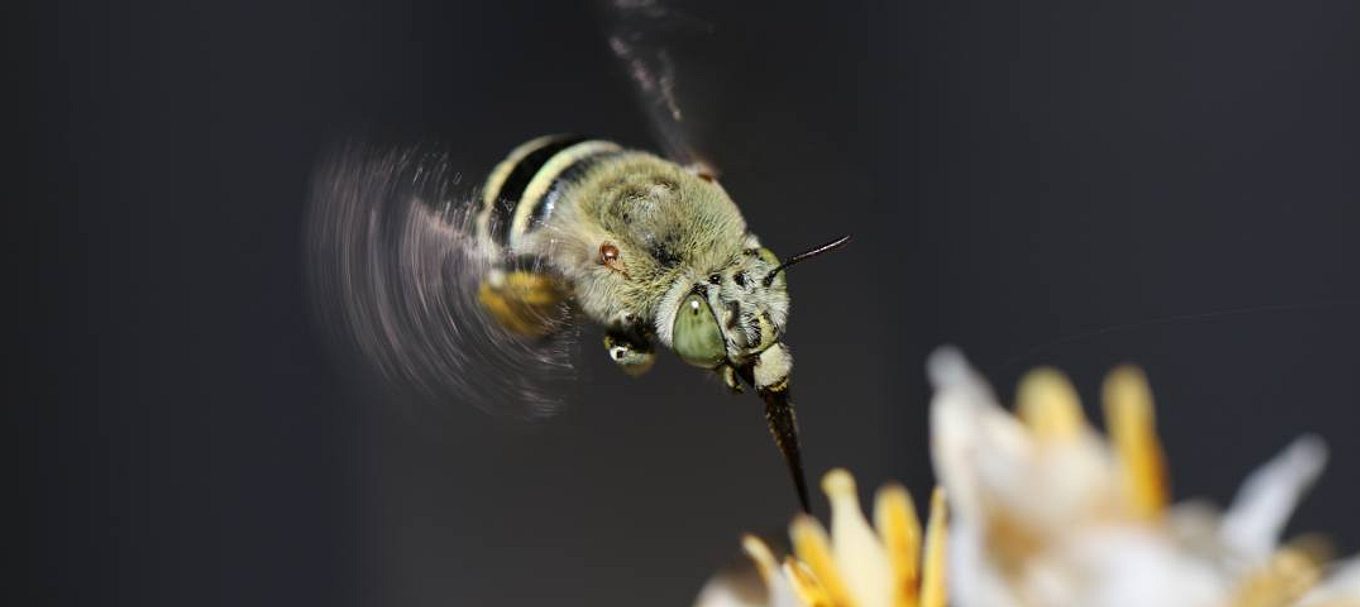
How to attract native bees to your garden
If you’re wondering whether it’s sensible to entice native bees to your garden, there’s one thing we need to get straight: native bees generally don’t sting.
They aren’t aggressive and some of them aren’t even capable of stinging you – we wouldn’t suggest trying to find out which of the 1650 Australian native bee species is though! So of course, it’s always better to play it safe.
Native bees play an important role in the environment. You probably know that honey bees help pollinate our plants but did you know that there are some native plants that they can’t pollinate?
This is where native bees come in. Many of our native bees are able to buzz pollinate, which honey bees can’t do, and it’s this type of pollination that’s required by some of our native plants.
Buzz pollination basically involves creating a vibration in the flower of the plant so that it will release its pollen. The blue-banded bee is one of these buzz pollinators.
There’s lots you can do to entice native bees to your garden. Here’s what:
Choose flowers that native bees would choose
Native bees prefer native plants, but they won’t wait around until your garden is in flower. Bees need pollen and nectar to live, and if they can't find flowers in your garden, they won’t settle in.
Furrow bees begin foraging as soon as spring arrives, while resin bees and leafcutter bees often become active in summer. Plant a variety of locally native plants that provide flowers from early spring to late autumn, and you'll keep native bees happy all year.
If you need help picking native plants and you live in and around Adelaide, you’re in luck. There are two great garden guides featuring native plant suggestions that are perfect for this area: the Adelaide gardens planting guide and the coastal gardens planting guide.
If you live further afield, the Botanic Gardens of South Australia Plant Selector is a great tool for picking suitable plants. It’s very simple – all you need to do is enter your postcode to generate a list of suitable plants for your area.
Don’t use insecticides
If you want to encourage bees to visit, don’t use insecticides. Especially systemic insecticides. Systemic insecticides are essentially soaked up by the roots of a plant before moving all the way through it.
They stay in the plant for a long time, which means pollen and nectar is poisonous for weeks, or even months, after application, so you might wind up accidentally killing the native bees visiting your garden.
Other types of insecticides are ‘contact’ and ‘ingested’ insecticides, which basically work as their names suggest – to be effective they either need to make contact with their target or need to be swallowed/absorbed.
Give native bees somewhere to live
Some native bees like to make their homes in the ground – that’s right, some bees burrow! – and others live in wood or crevices between rocks.
To appeal to those that live in soil, leave some bare ground. That means leaving some areas with no mulch.
You could also create a bee hotel for your new friends. A bee hotel is basically just the term for a human-made home for bees which can be as simple as a few holes drilled into wood or paper straws in a piece of pipe.
Check out this in-depth guide on how to build one – there’s plenty of options to choose from.
For more facts specifically about native bees check out our story: Why bees are so important for the environment. Or to find out how to welcome other fauna to your backyard, read our story: Your guide to encouraging local fauna to visit your backyard.
(Main image courtesy of Jeremy Gramp)
This story was originally posted in May 2018.





